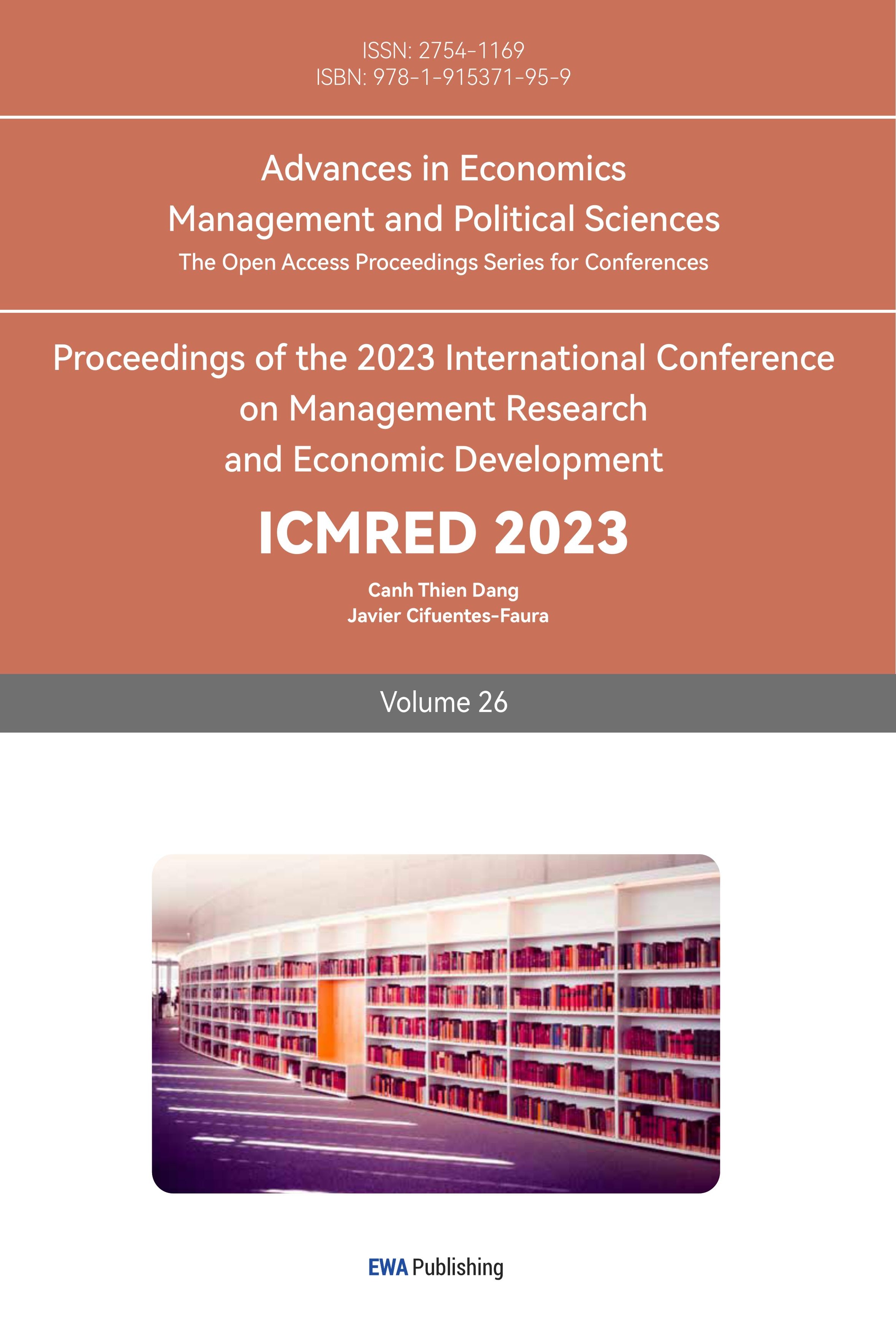References
[1]. Mikepattinson, Open water at the Olympics: Swim England open water, from https://www.swimming.org/openwater/open-water-olympics/ , last accessed 2023/03/23.
[2]. Lin, W.: Study on the risk and prevention of mass open water swimming competition. Beijing University of Sports.
[3]. Sun, Z.: Research on the risks and countermeasures of open water swimming - taking the West River of Minjiang in Fuzhou as an example. Journal of Jiujiang College: Natural Science Edition 31(1), 4 (2016).
[4]. Tian, J.: Analysis of common risks of athletes in open water swimming. Beijing University of Sports, 2016.
[5]. Fang, Q., Mei, X.: An exploration of some issues of safety and security in American mass swimming. Journal of Fujian Normal University Fuqing, 62-67(2005).
[6]. Tan, M., Zhou, X.: Research on the current situation and development countermeasures of mass swimming activities in China. China Sports Science and Technology 38(9), 3 (2002).
[7]. Rose CS.: Water-related lung diseases. Occup Med, 7(2), (1992).
[8]. Li, B.: Research on the development status, problems and countermeasures of mass open water swimming in China. Beijing University of Sports.
[9]. Xiang, L., Zhai, F.: Research on the current situation of open water swimming in China and the influencing factors. China Sports Science and Technology 50(2), 6 (2014).
[10]. Liu, W.: Screening and identification of toxin proteins that cause inflammatory responses in jellyfish. Jilin Agricultural University.
[11]. Xu, J.X.: The secret weapon of the killer sea snail. New Discoveries (5), 2 (2015).
[12]. Ferrini, S., Shackleton, R. T., Vimercati, G., Wood, L. E.: Perceptions of ecosystem services and disservices associated with open water swimming. Journal of Outdoor Recreation and Tourism 37, (2022).
Cite this article
Zhang,X. (2023). Analysis of Hidden Danger in Open Water Swimming Competition. Advances in Economics, Management and Political Sciences,26,139-144.
Data availability
The datasets used and/or analyzed during the current study will be available from the authors upon reasonable request.
Disclaimer/Publisher's Note
The statements, opinions and data contained in all publications are solely those of the individual author(s) and contributor(s) and not of EWA Publishing and/or the editor(s). EWA Publishing and/or the editor(s) disclaim responsibility for any injury to people or property resulting from any ideas, methods, instructions or products referred to in the content.
About volume
Volume title: Proceedings of the 2023 International Conference on Management Research and Economic Development
© 2024 by the author(s). Licensee EWA Publishing, Oxford, UK. This article is an open access article distributed under the terms and
conditions of the Creative Commons Attribution (CC BY) license. Authors who
publish this series agree to the following terms:
1. Authors retain copyright and grant the series right of first publication with the work simultaneously licensed under a Creative Commons
Attribution License that allows others to share the work with an acknowledgment of the work's authorship and initial publication in this
series.
2. Authors are able to enter into separate, additional contractual arrangements for the non-exclusive distribution of the series's published
version of the work (e.g., post it to an institutional repository or publish it in a book), with an acknowledgment of its initial
publication in this series.
3. Authors are permitted and encouraged to post their work online (e.g., in institutional repositories or on their website) prior to and
during the submission process, as it can lead to productive exchanges, as well as earlier and greater citation of published work (See
Open access policy for details).
References
[1]. Mikepattinson, Open water at the Olympics: Swim England open water, from https://www.swimming.org/openwater/open-water-olympics/ , last accessed 2023/03/23.
[2]. Lin, W.: Study on the risk and prevention of mass open water swimming competition. Beijing University of Sports.
[3]. Sun, Z.: Research on the risks and countermeasures of open water swimming - taking the West River of Minjiang in Fuzhou as an example. Journal of Jiujiang College: Natural Science Edition 31(1), 4 (2016).
[4]. Tian, J.: Analysis of common risks of athletes in open water swimming. Beijing University of Sports, 2016.
[5]. Fang, Q., Mei, X.: An exploration of some issues of safety and security in American mass swimming. Journal of Fujian Normal University Fuqing, 62-67(2005).
[6]. Tan, M., Zhou, X.: Research on the current situation and development countermeasures of mass swimming activities in China. China Sports Science and Technology 38(9), 3 (2002).
[7]. Rose CS.: Water-related lung diseases. Occup Med, 7(2), (1992).
[8]. Li, B.: Research on the development status, problems and countermeasures of mass open water swimming in China. Beijing University of Sports.
[9]. Xiang, L., Zhai, F.: Research on the current situation of open water swimming in China and the influencing factors. China Sports Science and Technology 50(2), 6 (2014).
[10]. Liu, W.: Screening and identification of toxin proteins that cause inflammatory responses in jellyfish. Jilin Agricultural University.
[11]. Xu, J.X.: The secret weapon of the killer sea snail. New Discoveries (5), 2 (2015).
[12]. Ferrini, S., Shackleton, R. T., Vimercati, G., Wood, L. E.: Perceptions of ecosystem services and disservices associated with open water swimming. Journal of Outdoor Recreation and Tourism 37, (2022).









